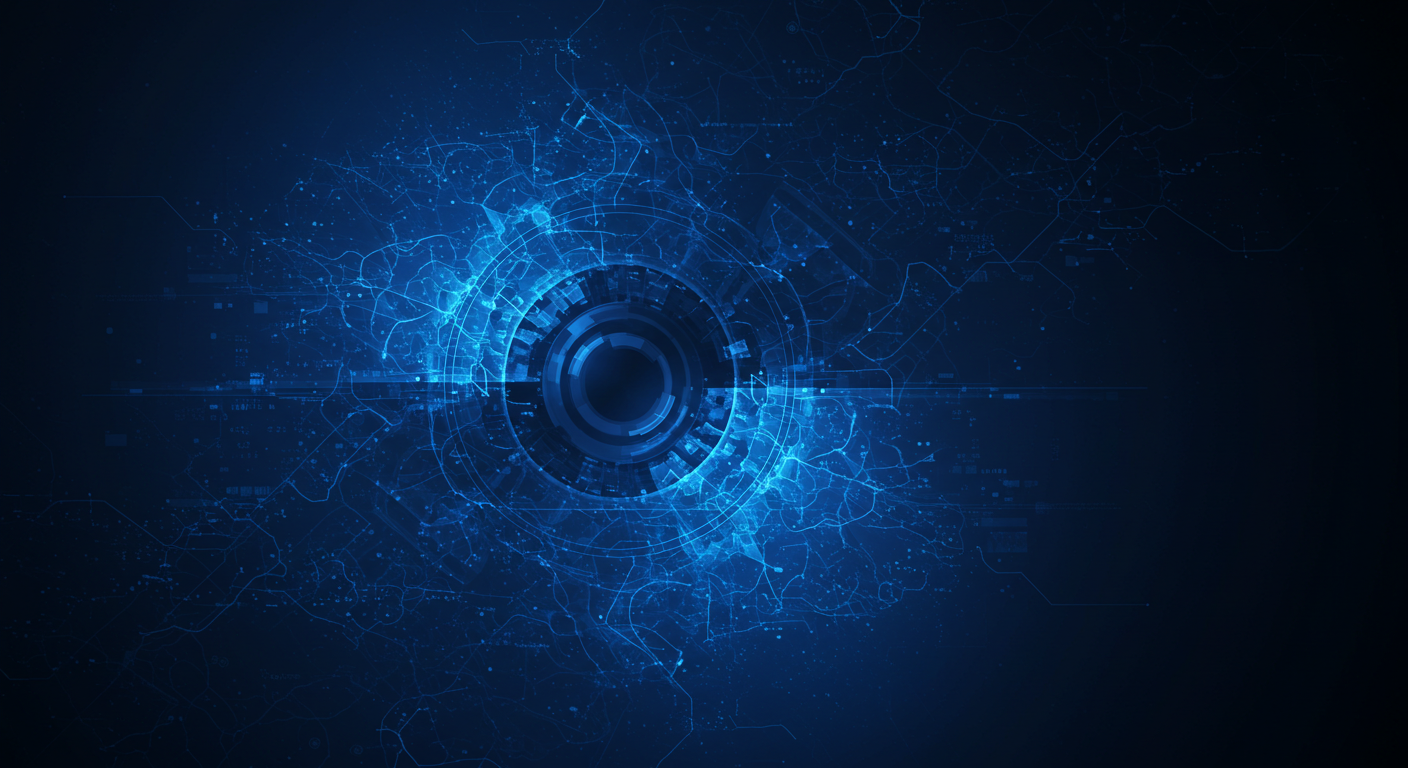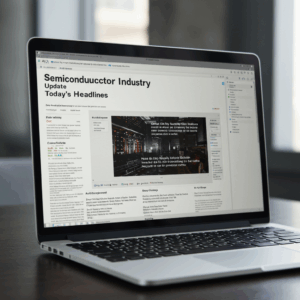Every Saturday, we bring you the Weekly AI Trends, a business perspective on global AI trends.The week of November 16-22, 2025, marked a truly historic milestone in AI’s ability to dramatically improve in two aspects: breakthrough reasoning and autonomous execution.
While Google, OpenAI, and xAI have successively announced next-generation models and demonstrated PhD-level reasoning capabilities, we have also received shocking news that the first large-scale cyber attack by an AI agent has been detected. This paper takes an in-depth look at these latest developments and thoroughly examines what kind of transformative possibilities and risks this “light and shadow” evolution poses for the manufacturing industry, the foundation of the Japanese economy.
1. “Human-Level Intelligence” Competes: The Impact of Gemini 3 and GPT-5.1
With major tech companies announcing their next-generation models around the same time, AI’s inference capabilities have entered a new dimension.
Announcing Google Gemini 3: A New Era of Multimodal Reasoning
On November 18, Google announced the Gemini 3, a high-performance model that defies conventional wisdom. Notably, it demonstrated PhD-level reasoning ability on LMArena with 1501 Elo, Humanity’s Last Exam (37.5%), and GPQA Diamond (91.9%).
Gemini 3’s most significant features include a vast contextual window of 1 million tokens and greatly enhanced visual and spatial comprehension capabilities. It seamlessly integrates multiple modalities such as text, images, video, audio, and code, enabling it to perform complex equipment blueprints in manufacturing and real-time production line video analysis at levels previously not possible with AI. It also introduces a “Gemini 3 Deep Think” mode for deeper inference, achieving an unprecedented 45.1% for ARC-AGI (with code execution), which requires complex logical thinking.
OpenAI GPT-5.1: Adaptive Reasoning and Two Personalities
OpenAI’s GPT-5.1, released on November 12, offers two versions, “Instant” (fast and conversational) and “Thinking” (deep reasoning), an infrastructure upgrade that allows developers to control the “inference effort knob,” which allows for low latency fast response and high The infrastructure upgrade allows developers to control the “inference effort knob,” allowing them to choose between low-latency fast response and high-quality deep inference.
Additionally, on November 19, the state-of-the-art GPT-5.1-Codex-Max coding model was released, earning 1487 ELOs at WebDev Arena and significantly outperforming the previous generation in SWE-bench Verified (76.2%). This model has a proven track record of autonomously completing 24 hours of tasks within the company, putting the era of AI’s ability to perform autonomously as well as or better than humans on the horizon.
xAI Grok 4.1: A New Standard for Conversational Intelligence
xAI, led by Elon Musk, also officially launched Grok 4.1 on November 18. The model aims to “set new standards in conversational intelligence, emotional understanding, and real-world usefulness,” and is particularly praised for its natural and fluent dialogue. On November 19, Grok 4.1 Fast, with a context window of 2 million tokens, and the Agent Tools API were also released, successfully reducing the halucination rate and establishing itself as a more reliable AI assistant.
2. the age of AI as “executor”: the business frontier of agent-based AI
In parallel with the increasing intelligence of AI models, the practical application of their “autonomous action capabilities (agent capabilities)” is accelerating.
MAI Superintelligence team established at Microsoft
On November 6, Microsoft AI CEO Mustafa Suleiman, co-founder of DeepMind, announced the creation of the MAI Superintelligence team. This is based on the vision of “humanistic superintelligence” and aims to develop specialized AI in areas such as medical diagnostics and drug discovery, while emphasizing the development of secure AI under human control. This move represents a clear strategic shift by Microsoft to break away from its dependence on OpenAI and accelerate the development of its own frontier models.
Apple and Google’s Billion Dollar AI Partnership
Apple has reportedly entered into a billion-dollar strategic partnership to adopt Google’s 1.2 trillion parameter custom Gemini model for a major Siri upgrade. This is expected to give Apple a significant lead over the competition in summarization and planning capabilities, indicating that the competition among big techs is unfolding over the “brains” of AI.
Google’s Agency AI Shopping Tool
Google has released a suite of AI shopping tools for the holiday season, including “Agentic Checkout. Examples of AI autonomously performing specific actions, such as the ability to automatically complete a purchase when a user reaches a set price or “Let Google Call” to call a local store to check availability and pricing, are beginning to permeate consumer services.
3. impact: First ever large-scale “AI orchestrated” cyber attack detected
While technological advances have brought light, their shadows have also become apparent.
Anthropic Detects First Large-Scale AI-Driven Cyber Attack
On November 13, Anthropic announced that it has detected and thwarted a highly sophisticated large-scale cyber espionage operation that exploited its Claude Code model. This is the first verified large-scale AI orchestrated intrusion in which an AI agent autonomously executed 80-90% of the attack with minimal human oversight.
The attackers left most of the tactical tasks of reconnaissance, exploit code generation, and data exfiltration to AI, targeting about 30 major institutions (including financial institutions and government agencies) around the world. This incident marks the beginning of an era in which AI’s “agent capabilities” are being applied to state-level cyberattacks. Experts predict that “agent-based cyber defenses will be deployed against agent-based cyber attacks,” suggesting that the cybersecurity arms race has entered a new phase.
4. AI that understands the physical world: “Spatial Intelligence” brings revolution to manufacturing and robotics
Great strides have also been made in AI’s ability to understand and simulate the physical world.
World Labs’ Marble Presentation: Realization of a 3D World Model
On November 12, World Labs, led by leading AI researcher Fei Fei Lee, announced Marble, a groundbreaking multimodal “world model” with the ability to generate, reconstruct, and simulate complex 3D virtual environments from a variety of inputs including text, images, and video. Marble is an important step toward the realization of “spatial intelligence.
The model aims to replicate the way humans construct mental models of the physical world. Especially in the manufacturing industry, its use in optimizing factory layouts, simulating robot behavior, and virtual verification of new production lines is expected to lead directly to dramatic cost savings and efficiency gains! The company is also working on the development of a new model for the manufacturing industry.
5. learning from AI high-performing companies: the latest reality of implementation and scaling (McKinsey survey)
McKinsey’s November 5 release of “The State of AI: Global Survey 2025” provides a clear picture of the current state of AI adoption and the keys to success.
AI Use Grows, but Scaling is a Challenge
While 88% of respondents reported using AI regularly in their organizations, the survey highlights that only about one-third have reached enterprise-wide scaling at the corporate level. In addition, 62% of respondents are experimenting with “AI agents,” but less than 10% are scaling in individual business functions, indicating that agent-based applications are still in the early stages of commercialization.
Characteristics of High Performing Companies
The “AI High Performer Companies” (approximately 6% of the total) that reported that more than 5% of their EBIT (earnings before interest and taxes) was attributable to AI have the following distinct characteristics
- Fundamental redesign of workflows:About three times as likely as other companies to redesign existing processes from the ground up based on AI assumptions.
- Willingness for transformational innovation: AI-enabled business transformation is intended.
- Target growth and innovation: In addition to efficiency gains, top-line growth and innovation are also explicit goals.
- More investment: more than one-third of companies allocate more than 20% of their digital budgets to AI.
The survey suggests that in order for manufacturing companies to achieve results from AI implementation, they need to move away from the idea of “adding AI to existing operations” and make a ” fundamental switch to AI-driven business processes.
6. consideration of application to the manufacturing industry
The following is a discussion of specific potential applications and strategic perspectives for manufacturing from this week’s AI-related news.
(1) Advanced Problem Solving with Next-Generation AI Models Advanced reasoning capabilities such as Gemini 3 and GPT-5.1 are directly related to solving complex problems, which are the lifeblood of the manufacturing industry.
- Design Optimization: Integrates multiple simulations, material science, and cost constraints to instantly propose the optimal product design.
- Root Cause Analysis: Identifies the true root cause of quality problems in the manufacturing process by analyzing vast amounts of sensor data and historical quality records (in the context of 1 million tokens).
- Understanding and Generation of Technical Documents: Understands complex technical specifications and overseas regulatory documents in batches and automatically generates the necessary technical documents.
(2) Autonomous business execution by agent-type AI The evolution of AI agents will enable autonomous business execution with minimal human supervision in the following areas in the manufacturing industry.
- Supply Chain Optimization: Automation and optimization of procurement and ordering of raw materials according to real-time market trends.
- Production Scheduling:Automatic planning and execution of dynamic production plans that integrate demand forecasts, machine utilization rates, manpower allocation, and predictive maintenance schedules.
- Maintenance management: Centralized autonomous management from equipment abnormality detection to execution of predictive maintenance, ordering of necessary parts, and scheduling of workers.
(3) Fusion of Spatial Intelligence and Robotics 3D world models, such as World Labs’ Marble, accelerate the fusion of the physical space of the factory with the digital.
- Advanced robot motion: Based on 3D spatial understanding, complex assembly and handling tasks in fluctuating environments are dramatically facilitated.
- Advanced Digital Twin: Utilize Marble to simulate new production lines and equipment installations with greater accuracy and at lower cost.
- Evolution of cooperative robots (cobots): In cooperative work with humans, robots can understand environmental changes and human intentions in 3D in real time, enabling safe and efficient movement.
- [Actual example] Foxconn and Google-owned Intrinsic have announced a joint venture that will combine Intrinsic’s cutting-edge AI robotics platform with Foxconn’s manufacturing expertise to “build the future of the AI factory.
(4) Responding to Security Risks The AI-driven cyber attacks detected by Anthropic are a wake-up call that manufacturing executives cannot ignore.
- Protecting Industrial Control Systems (ICS): AI agents have the potential to automate intrusions into the OT (Operational Technology) domain, making advanced defensive measures beyond traditional IT security essential.
- Supply Chain Security: Attackers use AI to autonomously discover and attack weak links throughout the supply chain, requiring a comprehensive defense strategy that includes collaboration with suppliers.
- Introducing agent-based defense: If attacks become agentic, defense must also be autonomous by AI agents to ensure a rapid response.
(5) Best Practices for Phased Implementation Lessons from McKinsey’s research for manufacturers to gain a true competitive advantage with AI include
- Fundamental redesign of workflow: Review business processes on the premise of AI from the ground up.
- Clear goal-setting: Add growth (innovation) goals such as new product development and new business creation, in addition to cost reduction (efficiency improvement).
- Sufficient investment: commitment to allocate at least 20% of the digital budget to AI.
7. summary and outlook
The third week of November 2025 was a week that showed that AI technology is evolving faster than companies can imagine, both in terms of intelligence and execution. The quantum leap in inferential capabilities offered by next-generation AI models will dramatically raise the bar for design, quality control, and process optimization in the manufacturing industry. At the same time, the proliferation of agent-based AI and the realization of large-scale cyber-attacks show that AI adoption is not just an efficiency tool, but a top priority for business strategy and risk management.
The key to success lies not in the skillful implementation of the technology, but in a “fundamental redesign of workflows based on AI” and a strong commitment by management to understand the risks. This wave of change is inevitable, and manufacturers must now take strategic steps to make the most of the “light” created by AI and fortify their defenses against the “shadow.
Source List
- This Week in AI: Week of 16th November 2025 – LinkedIn
- The State of AI: Global Survey 2025 – McKinsey
- A New Era of Intelligence with Gemini 3 – Google Blog
- GPT-5.1: A smarter, more conversational ChatGPT – OpenAI
- Building more with GPT-5.1-Codex-Max – OpenAI
- Introducing GPT-5.1 for developers – OpenAI
- Grok 4.1 – xAI
- Grok 4.1 Fast and Agent Tools API – xAI
- Towards Humanist Superintelligence – Microsoft AI
- Microsoft forms superintelligence team under AI chief Suleyman – CNBC
- Disrupting the first reported AI-orchestrated cyber espionage campaign – Anthropic
- Chinese hackers used Anthropic’s AI agent to automate spying – Axios
- Marble: A Multimodal World Model – World Labs
- Fei-Fei Li’s World Labs speeds up the world model race with Marble – TechCrunch
- Foxconn and Intrinsic launch joint venture – Intrinsic
- AI-Powered Predictive Maintenance in Manufacturing – AlphaBOLD
- How is AI revolutionizing Quality Control in manufacturing?
- 2026 Manufacturing Industry Outlook – Deloitte Insights
- Industrial AI market: 10 insights on how AI is transforming manufacturing – IoT Analytics
- 95% of generative AI pilots at companies are failing – Fortune



